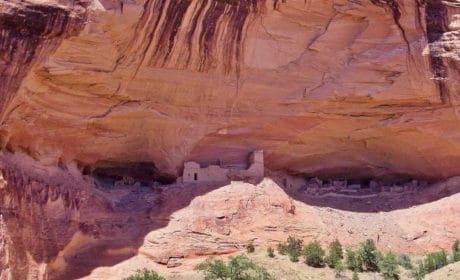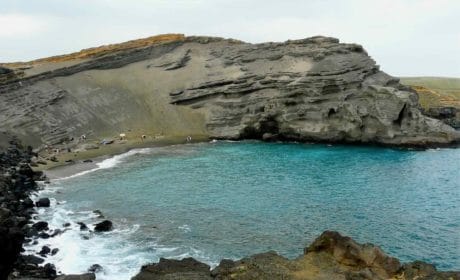Dismals Canyon in Alabama definitely qualifies as off-the-beaten-path. James Richardson shares tips for visiting this little-known destination. This could be a fun addition to your next boomer road trip.
The northern region of Alabama has a lot of natural beauty and is just a fun, short road trip from where me and my wife of fifty-five years live in West Tennessee. Little River Falls, DeSoto Falls, Noccalula Falls, Wheeler National Wildlife Refuge, Lake Guntersville, and Monte Sano State Park are all great places to see and visit.
But one of the most interesting spots that we have found is Dismals Canyon in the northwestern part of the state. We have been there at least three times. (Check the official website for open hours, as they can change).
For one reason, it is not that far away for us to drive. And, also, the rocky canyon with steep, moss-covered walls and large rock formations is an unusual and beautiful place.
Table of Contents
How to get to Dismals Canyon
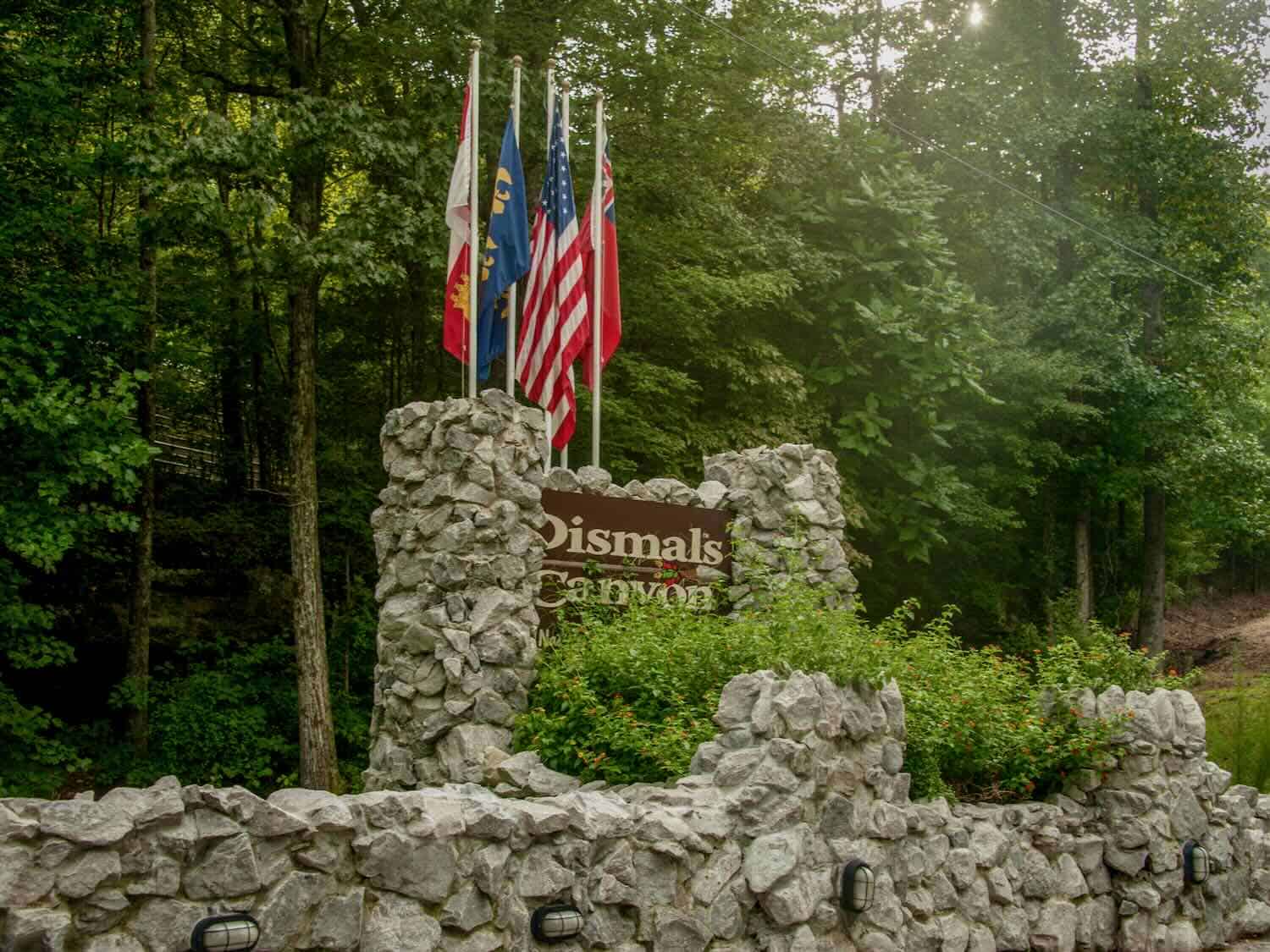
Anyone going to Dismals Canyon will have to be looking for it because it is off the beaten path. It is near the town of Phil Campbell, Alabama, just south of Russellville.
When we drive from Tennessee, we take US 72 to the junction of US 43 at Muscle Shoals. Then, we turn right onto US 43, since we are coming from West Tennessee.
We drive for about 24 miles through the small town of Russellville staying on US 43. At County Road 8 we make another right turn and the entrance to the canyon is located about one mile from the turnoff. Easy.
National Landmark in Alabama
The National Park Service named the 85-acre privately-owned and operated Dismals Canyon as a National Natural Landmark in 1975. There are several good reasons for that designation — its biological diversity and its geologic and human histories.
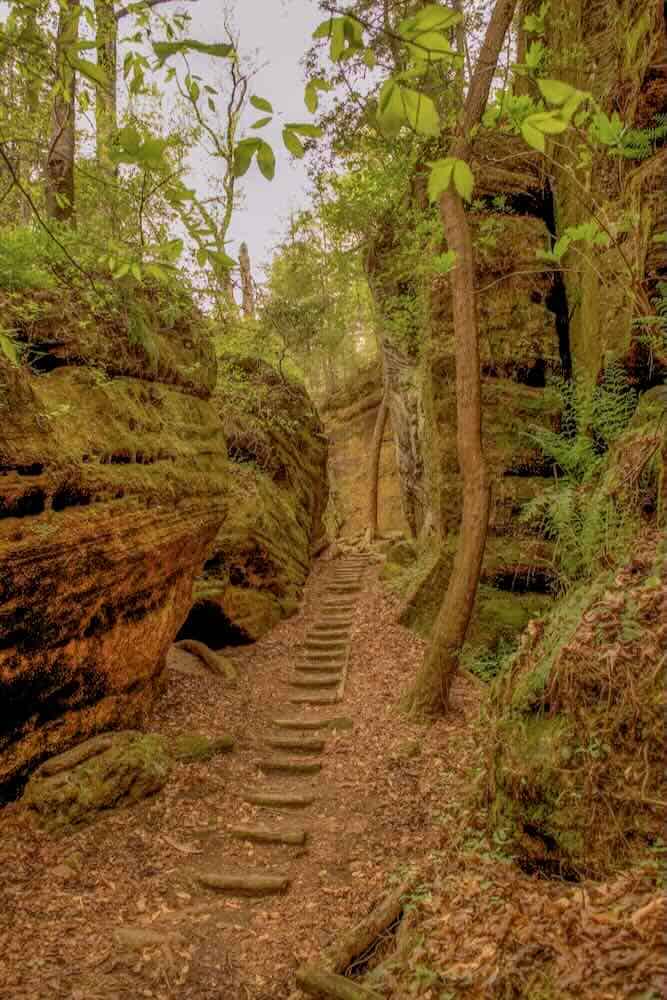
The first time my wife and I visited Dismals Canyon, we were amazed by the rich green colors of the moss-covered canyon walls. Being a photographer of many years, and having used a film called Fuji Velvia (many younger readers won’t know what that is,) I was excited with all the brilliant green colors. It made the phrase “Fuji green” come alive.
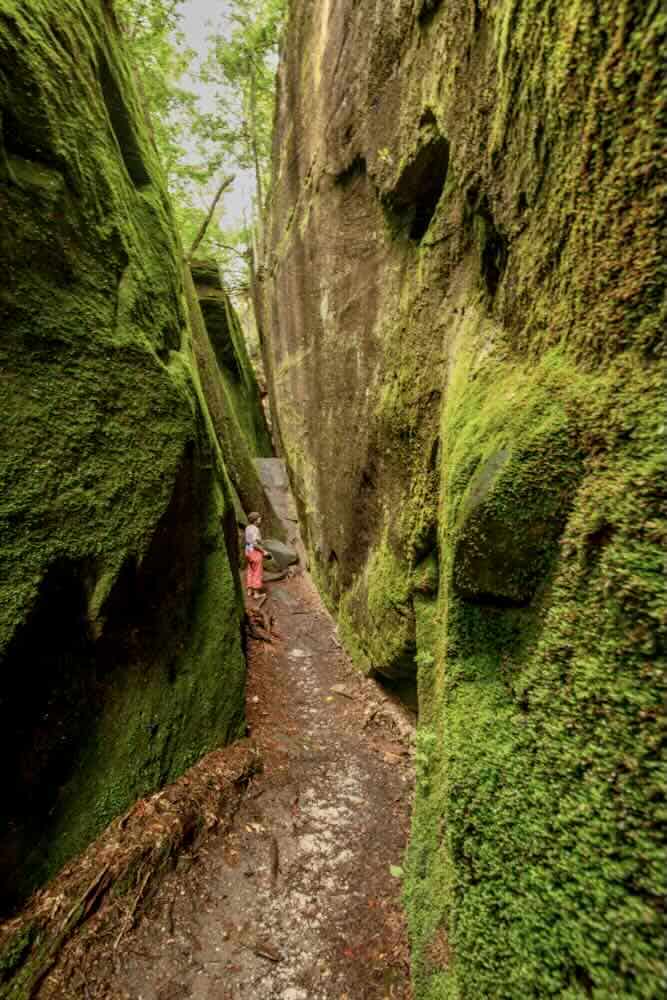
Dismals Canyon is about thirty feet deep and almost a mile long. It is not very large, as National Landmarks go.
The canyon has a well marked mile and a half trail through the rocky crevices and along the stream called Dismals Branch. The only way into the canyon is by going down a series of stairs descending the thirty feet to the canyon floor.
Rock formations of Dismals Canyon
The trail travels through and beside several large rock formations that have names like Pulpit Rock, Dance Hall, Indian Head Rock, Fat Man’s Misery, Stove Pipe, and Witches Cavern. All these have significance and their names give a hint to their uses.
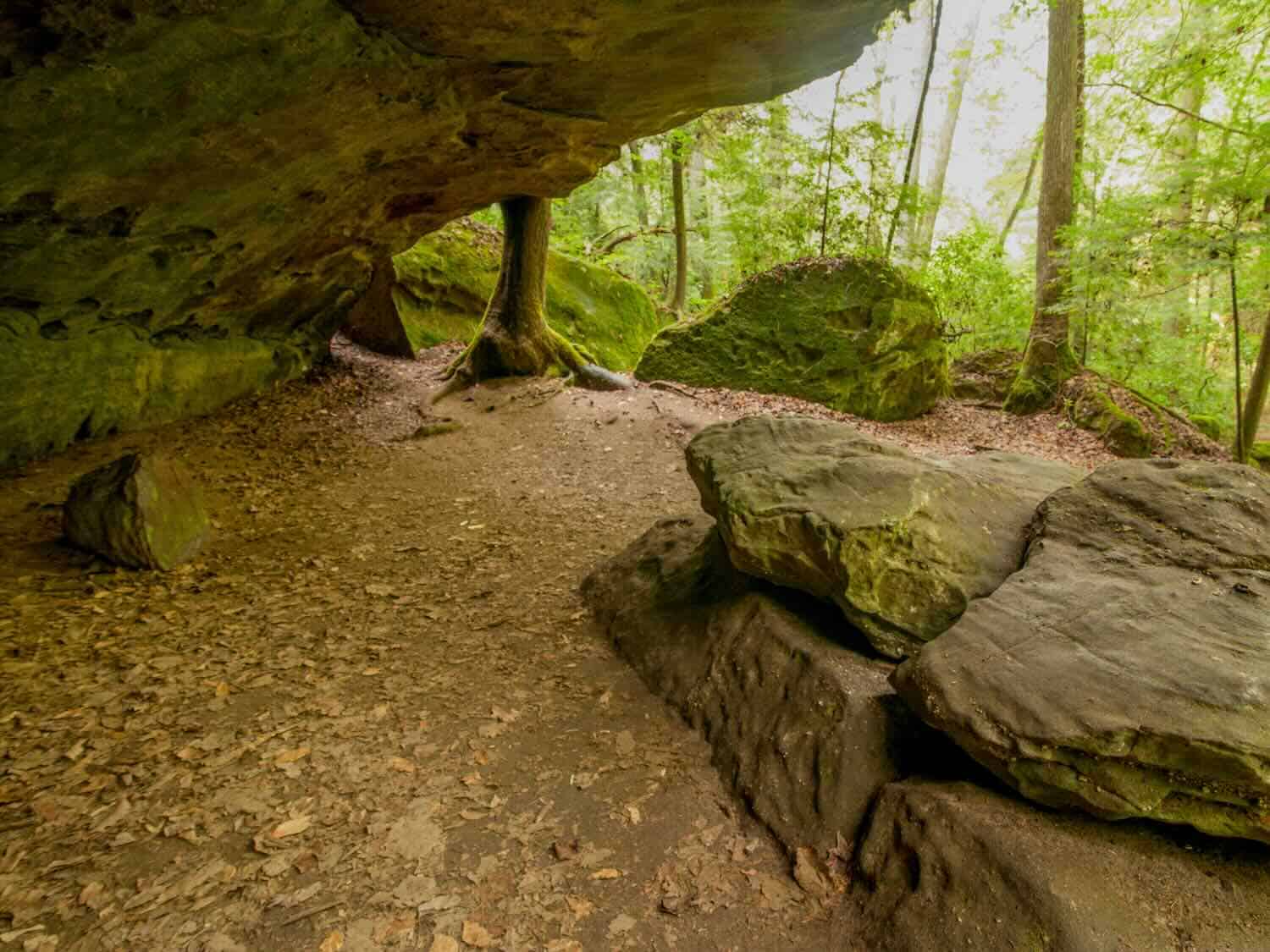
For instance, we found out that the Kitchen, which is a partially covered flat area that is protected by large rocks, was used by the Chickasaw Indians, not only for cooking, but also for tribal rituals.
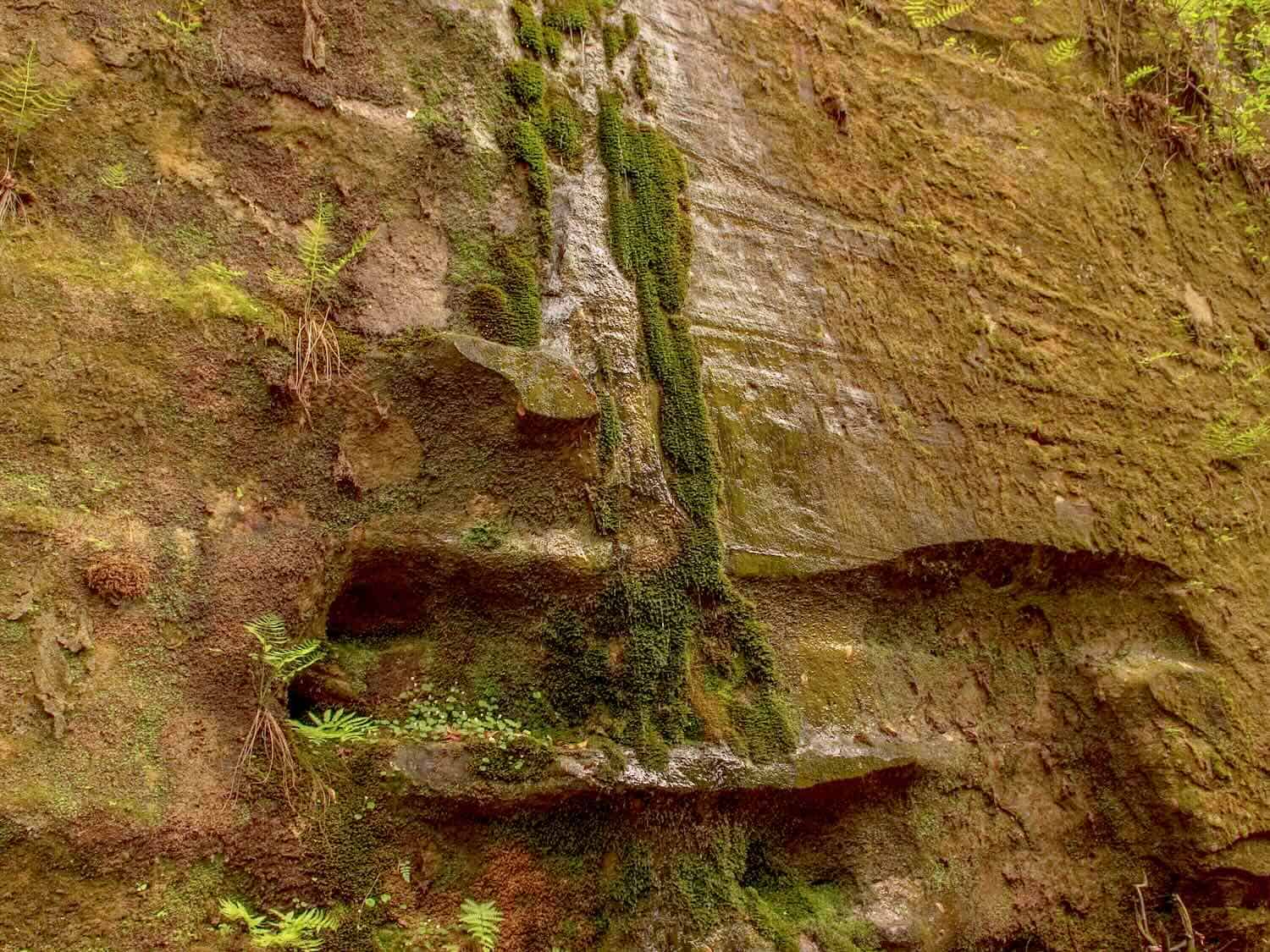
Another land feature is the Weeping Bluff. We asked at the country store about why it is called this. We were told that it is reminiscent of a face of an Indian maiden. It appears the maiden is weeping as water seeps from the rocks. Hmmm.
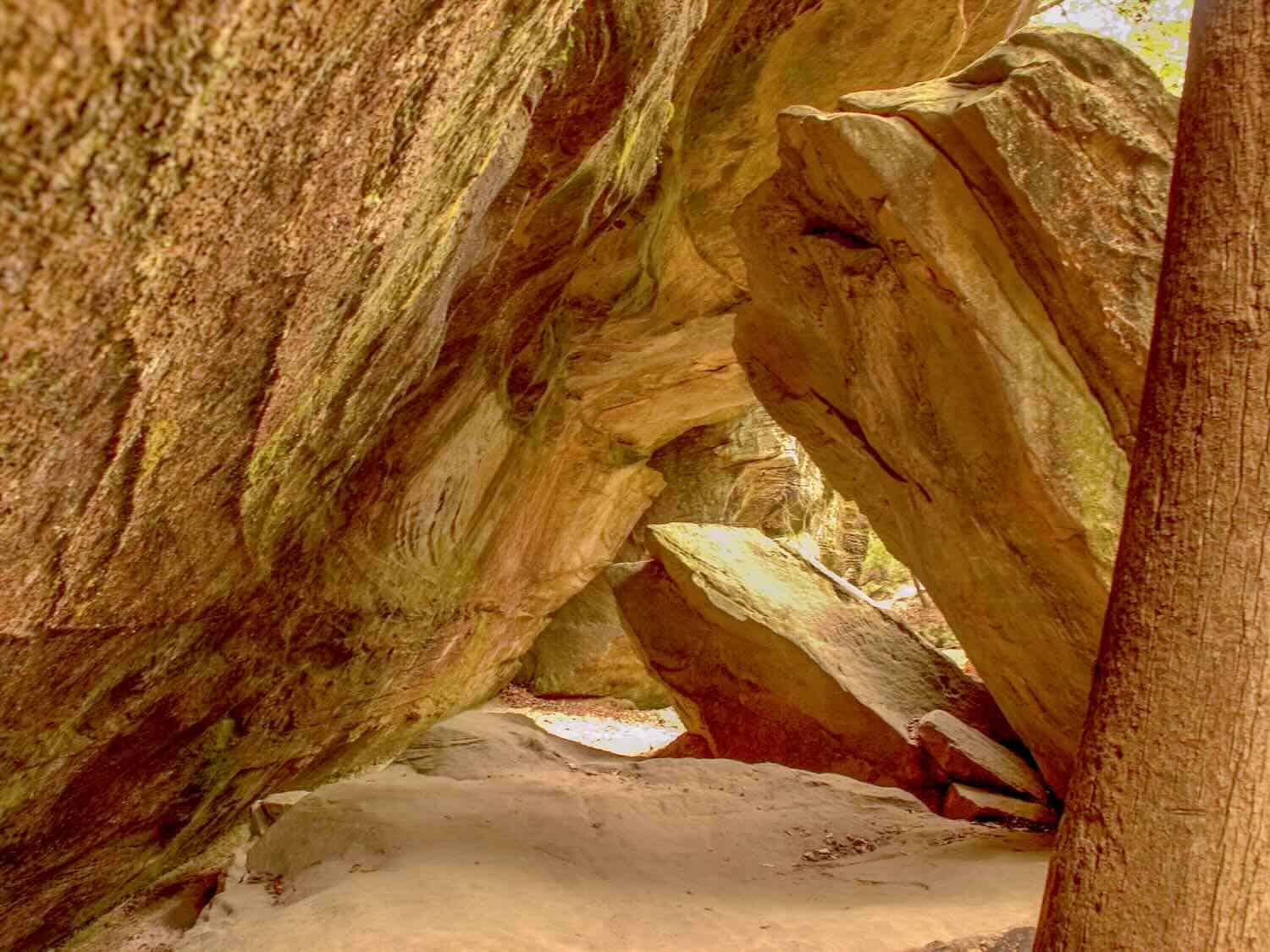
Another land form is the Dance Hall, which is a well-protected area which served as a site for meetings or congregations. And, Fat Man’s Misery is a narrow passageway that many people might have difficulty negotiating. Of course, my bride had no trouble and wanted to show off in one of my photographs.
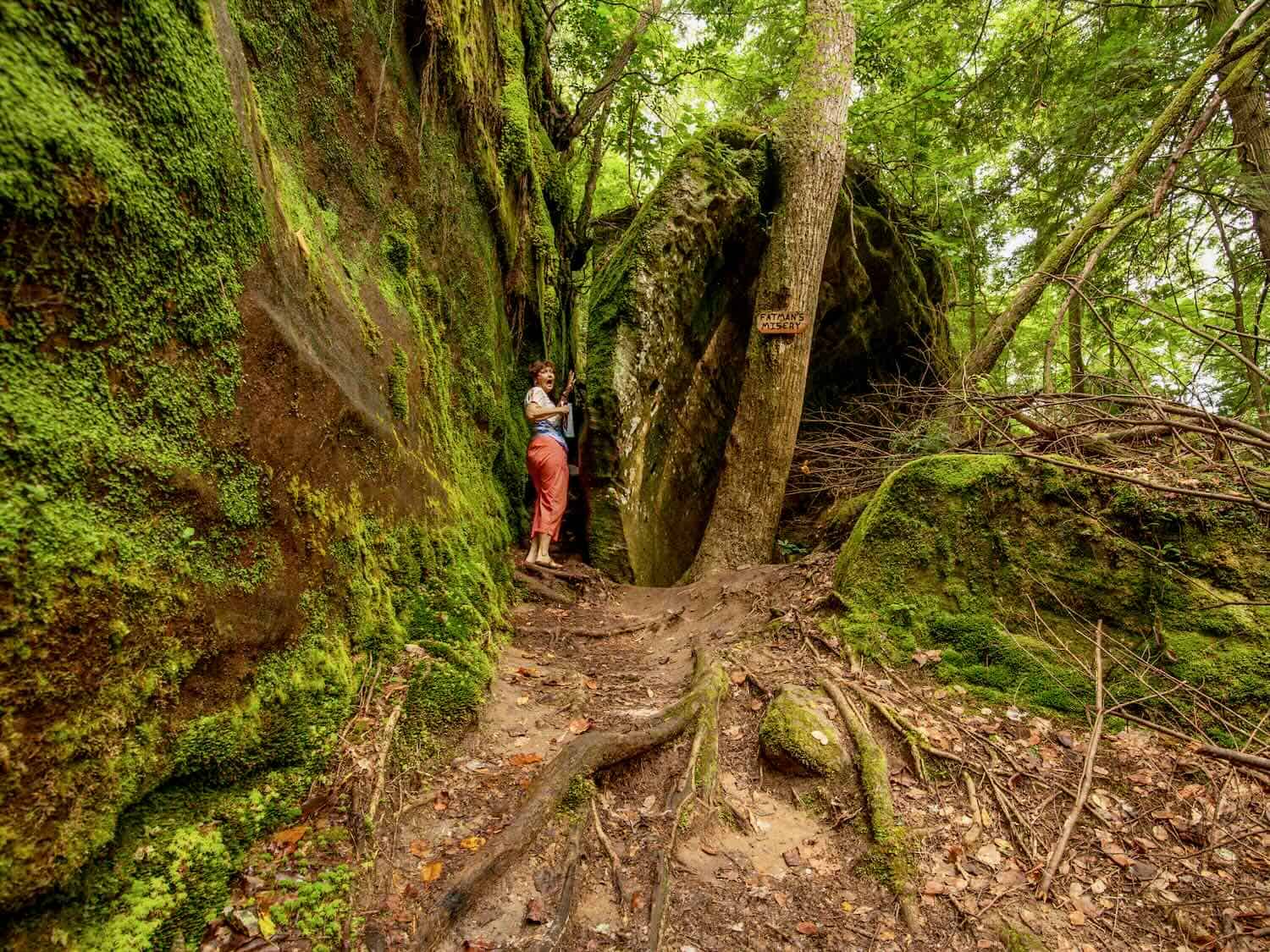
The trail through the canyon leads along the stream to the end of the canyon, where a short wooden bridge crosses that stream. The path continues back to the point of origin near Rainbow Falls, one of two waterfalls in the canyon.
I suppose that is one reason we have been attracted to the place, besides its uniqueness. The waterfalls.
Dismals Canyon waterfalls
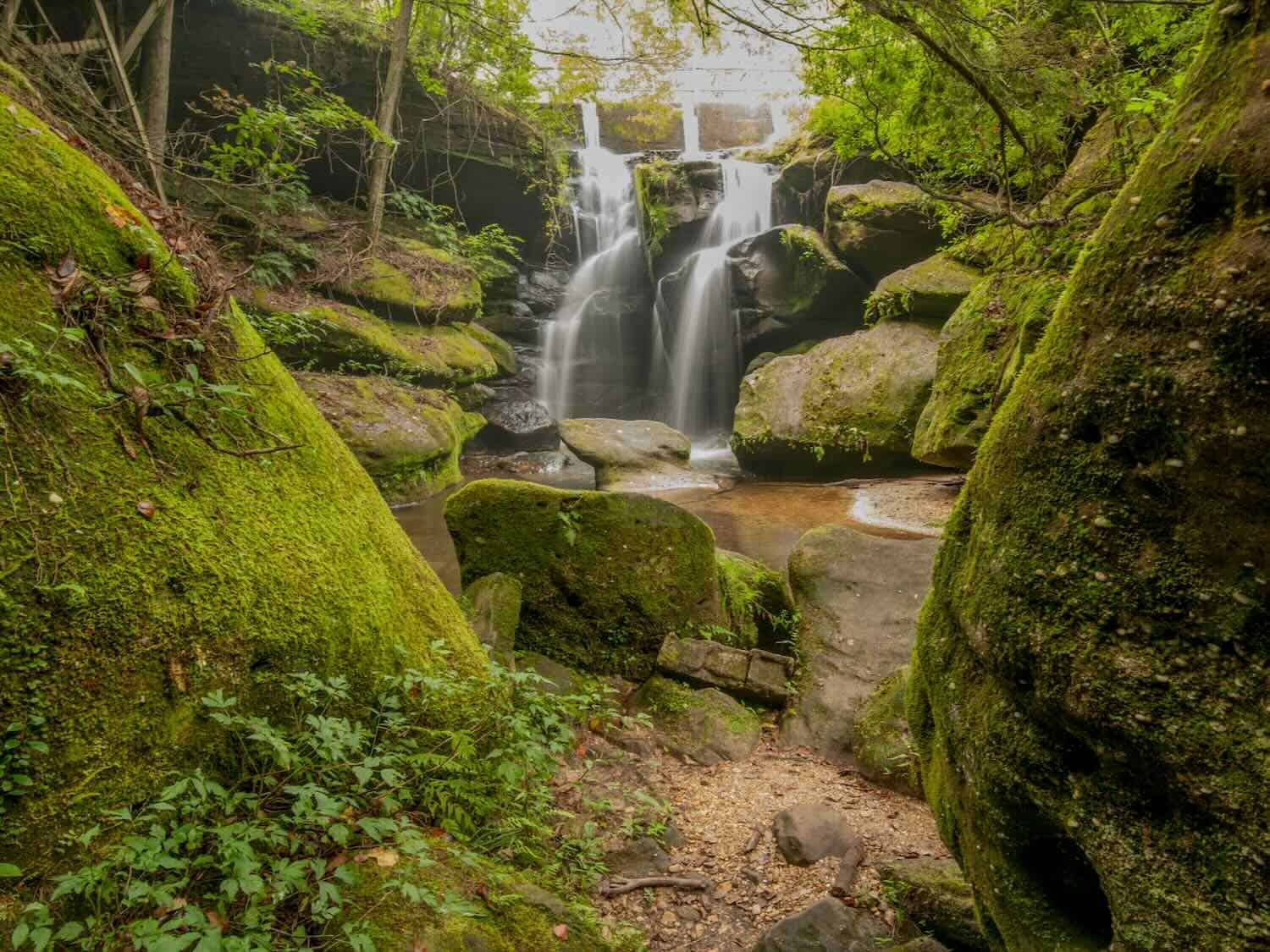
Rainbow Falls is located at the entrance of the canyon near where the tour begins. It is formed as the Dismals Branch of Bear Creek drops fifteen feet into a pool in the canyon. These waterfalls are not massive, roaring ones, but they are scenic. Remnants of a water mill were found near this waterfall years ago.
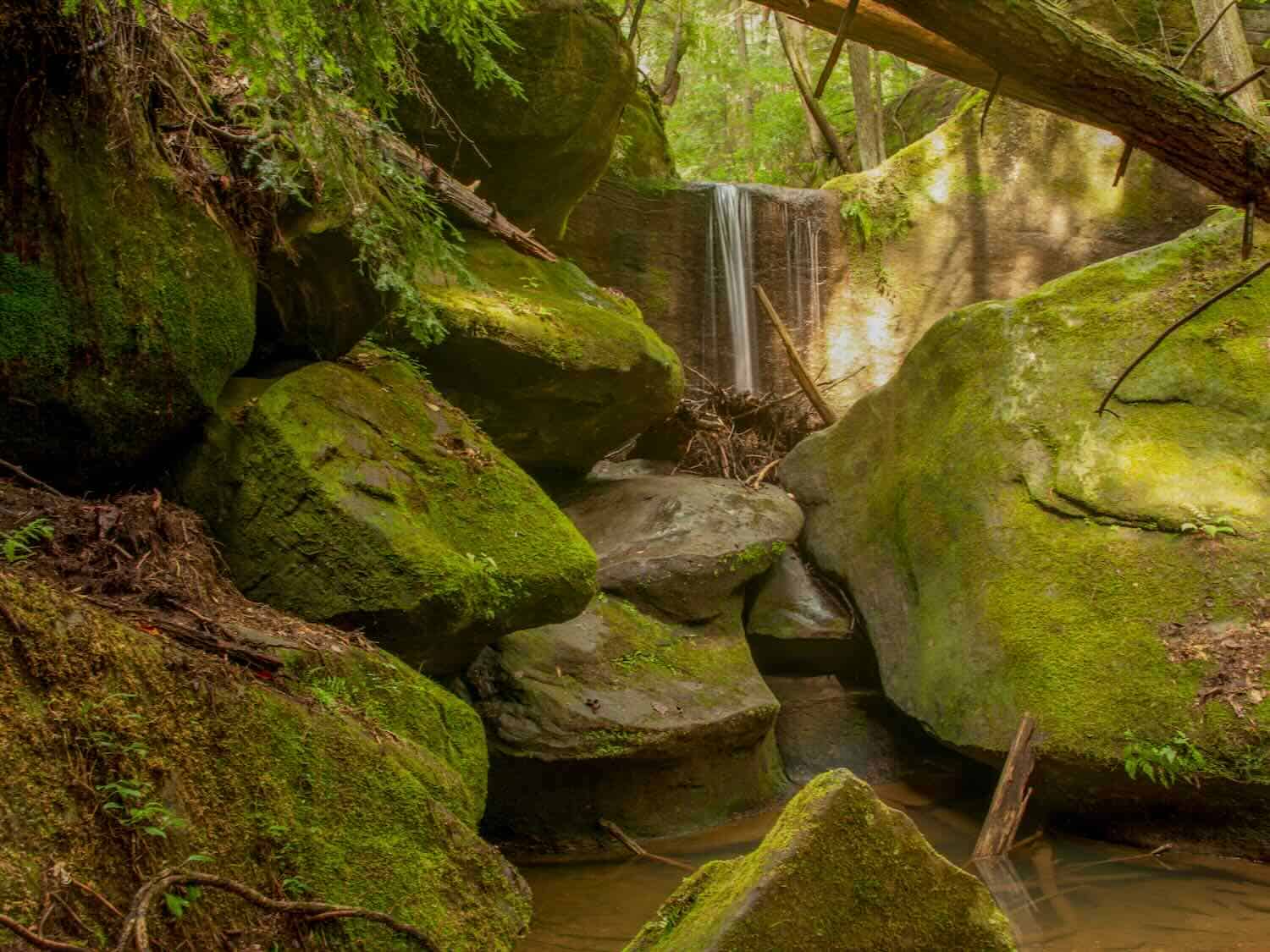
The second waterfall is the smaller Secret Falls. The area around it is a natural arboretum. There are 27 species of native trees growing within 100 feet of the waterfall.
Farther along the trail, one of the canyon’s arboreal residents is the “Champion Tree,” which is a Canadian hemlock that is 138 feet tall with a circumference of 8 feet 9 inches. It is estimated to be 360 years old.
We took all the trails throughout the canyon, but stopping at interesting formations made our visit to Dismals last a couple hours.
No one really knows how the canyon got its name, but it is believed that it was from the area’s early Scotch-Irish settlers who were familiar with a spot in Scotland called “Dismals.” Another theory is that the settlers felt uneasy about the rugged bluffs and dark caves of the canyon and thought it looked “dismal.” At any rate, the canyon is unusual and we found it very interesting in a number of ways.
Boomer Travel Tip
Looking for more Tennessee waterfall hikes? Falcon Guides’ Hiking Waterfalls Tennessee will show you where to go.
Meet outlaw Rube Burrow
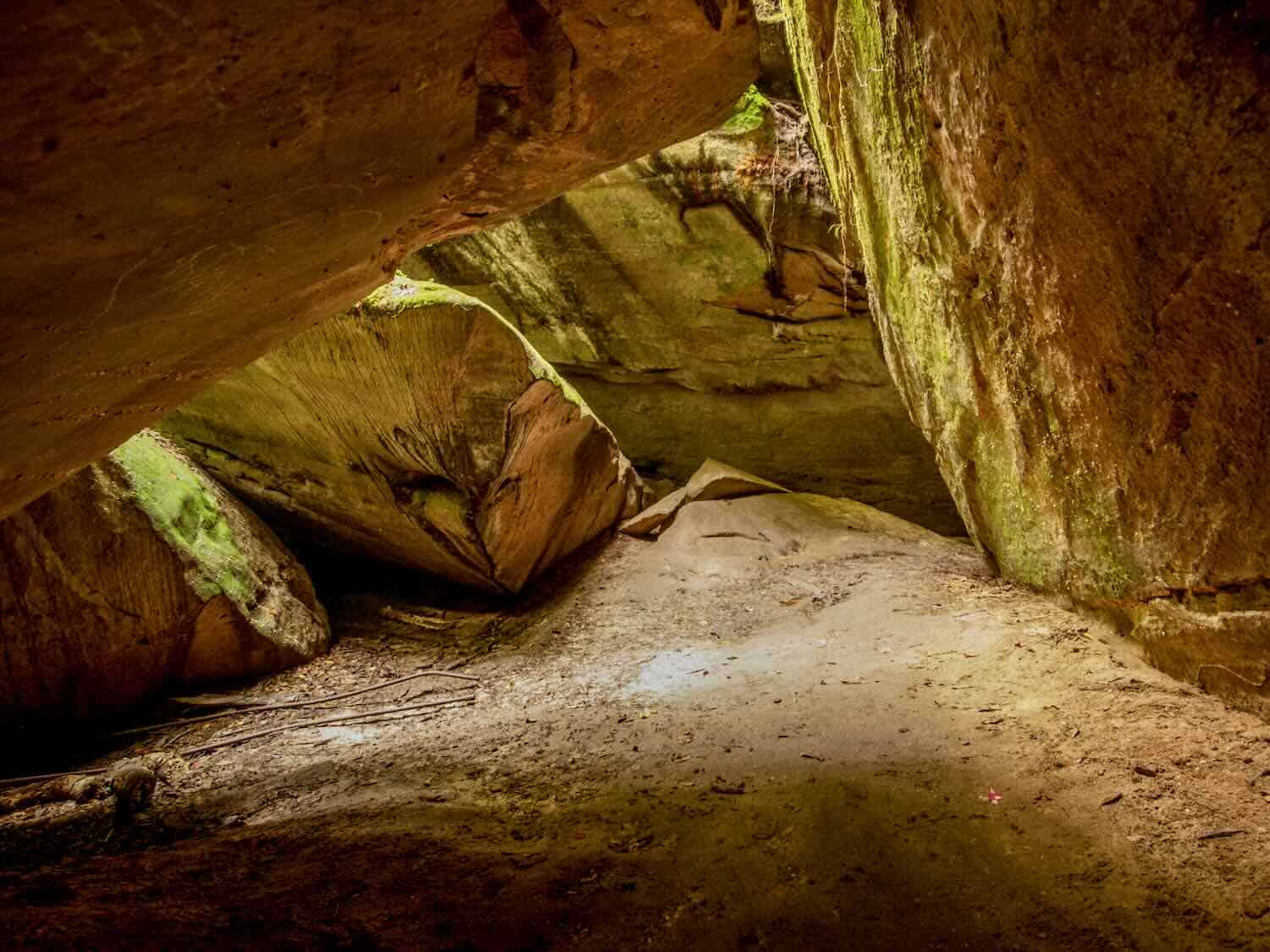
Many former residents, whether they were Native Americans, early settlers, or outlaws, have frequented the canyon. There are tales passed down through generations of secret Indian rituals and of the canyon being a hideout for outlaws. One of those outlaws is a local legend.
Reuben Houston Burrow (also known as Rube Burrow) was born in nearby Lamar County in the late 1850s. He was the leader of a gang that robbed trains in Texas, Arkansas, and Mississippi.
Burrow supposedly hid in Dismals Canyon to evade capture during his exploits. But he made a mistake when he robbed a train carrying funds protected by the Pinkertons.
They finally caught him and during Burrow’s escape attempt, his life was ended. To learn more about Rube Burrow, read this article from Encyclopedia of America.
Native American history in the canyon
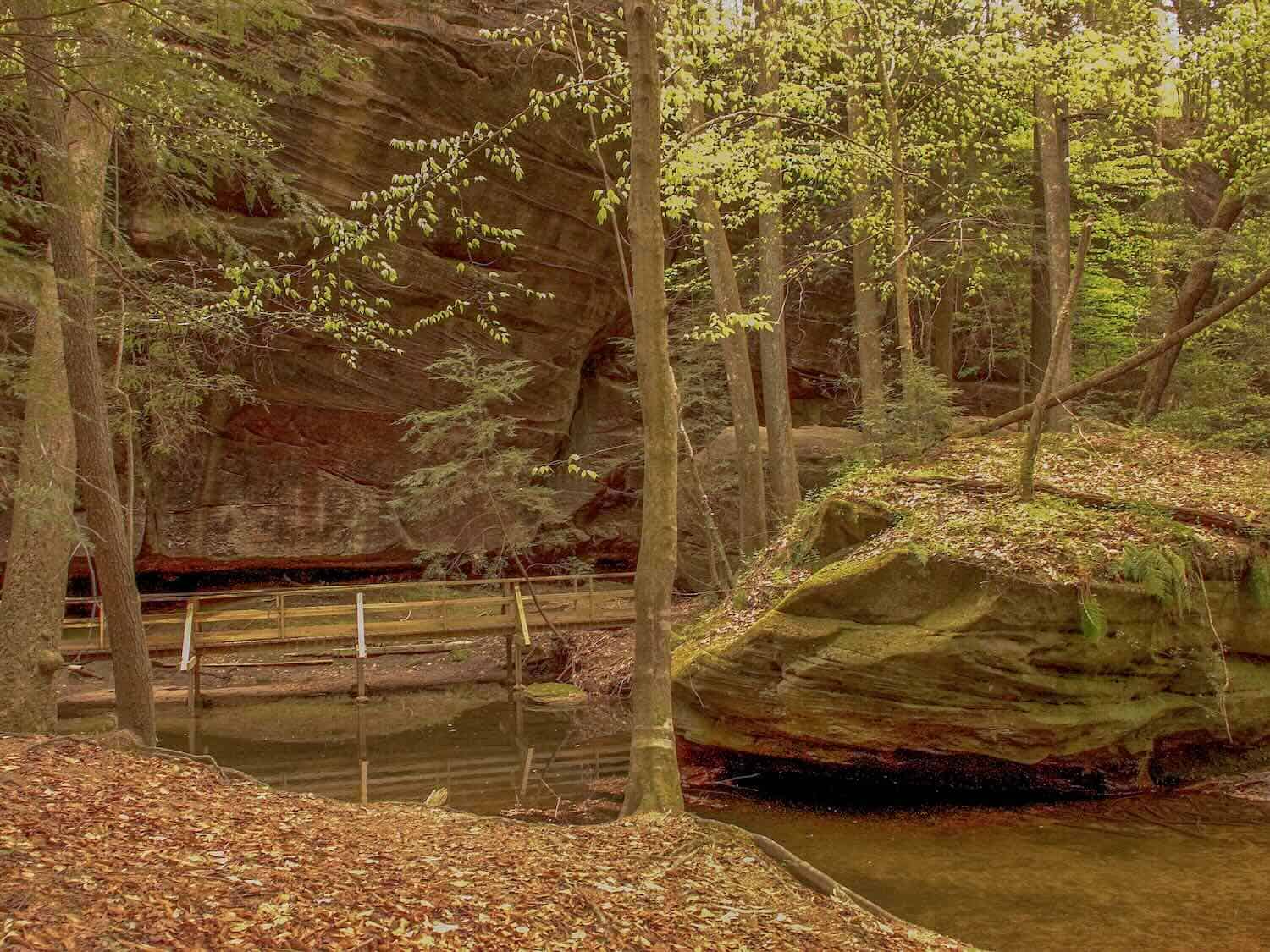
Explorers have found pottery and arrowheads on the canyon floor probably made by Paleo Indians, the first people known to inhabit northwest Alabama. They also found an old musket and a cot in one of the dark spots of the canyon. That could have been left by outlaws looking for a hiding place, maybe even Rube Burrow.
Besides the Paleo, the canyon has been inhabited by other various Native American groups, like the Pueblo, Chickasaw, and Cherokee. So, all kinds of people throughout history have used the canyon for habitation and refuge.
In 1838, U.S. Troops rounded up the Native Americans and forced them from their ancestral lands. They held them under guard in the Dismals Canyon for two weeks before sending the natives to Muscle Shoals where they began their long march on the infamous Trail of Tears.
Take a night tour to see the Dismalites
The Dismalites are actually larvae of fungal gnats commonly known as glow worms. The scientific name is Orphelia fultoni. They are very small, about a quarter of an inch long. Their body is a little bit larger than the size of a string.
Dismals Canyon is one of the only known locations in the United States to see these night creatures. They have also been reported inside Hazard Cave at Pickett State Park (official website) in Tennessee. Hazard is not really a cave, but just an outcropping of sandstone rock shelter.
On trips around Tennessee in previous years, we have visited Hazard Cave, but did not know about glow worms then. In other parts of the world, like locations in Australia and New Zealand, glow worms have been found. So, perhaps glow worms are more common than we have previously thought.
We have never been on one of the night tours of Dismals Canyon to see the dismalites, but a guide does take visitors to see them in darkness. They are visible on moss-covered boulders in the canyon and emit a bright blue-green light to attract food, in the form of small flying insects.
According to the Dismals Canyon website, the dismalites require a specific habitat to survive: humidity to keep them from drying out, hanging surfaces to allow them to build webs to attract prey, a sufficient amount of insects as food supply, and darkness for their luminescence to show. The peak seasons for seeing dismalites is in the spring from late April through May, and in the fall toward the end of September to the first of October.
Reservations for the night tours should be made on the website. Self-guiding tours are the most common way of exploring the canyon during the daylight hours.
Prospective visitors should check the website for open hours and times for night tours. In winter Dismals Canyon is closed during the months of December, January, and February.
Places to stay near Dismals Canyon
Staying at Dismals Canyon cabins is a surprisingly luxurious option. You’ll find two well-appointed cabins that are called “Bringing Up the Moon” and “Bringing Down the Sun.”
Visitors can make reservations March through November, or visitors may call. There are also several primitive campsites that are available seven days a week from Memorial Day to Labor Day.
Staying in Russellville (12 miles north of Dismals Canyon) is another option. Book rooms here.
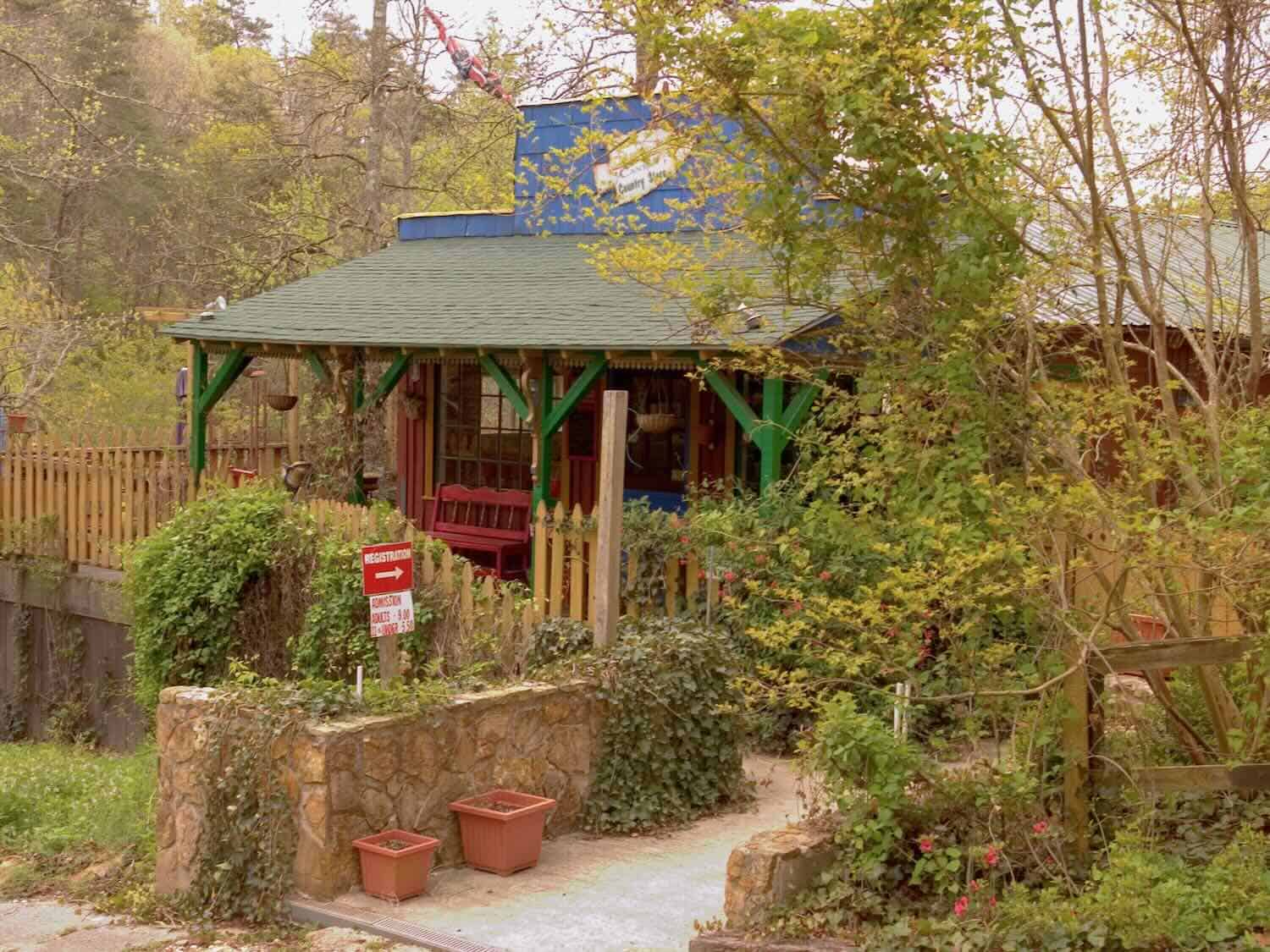
The park’s country store, where tickets are purchased, has drinks, candy, and souvenirs. A soda fountain and grill offers visitors burgers, sandwiches, ice cream, and old fashioned milk shakes. The soda fountain is only open Fridays, Saturdays, and Sundays.
A visit to Dismals Canyon can be educational and enlightening, and at the same time, visitors can hike, eat a burger, see dismalites, and even spend the night.
When you’re ready to segue from nature to music, extend your trip with a stop in Muscle Shoals, Alabama. It’s a prime destination on a Southern musical road trip itinerary.

